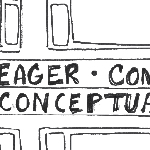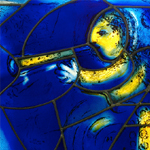Luc Tuymans’ retrospective exhibition at the MCA
By Ziyuan Wang
The way Belgian artist Luc Tuymans describes his process is almost as intense as the art itself. This painter of the cruel and grotesque claims to execute a given painting from start to finish in just one day, without interruption, in order to “keep the intensity,” and he once abandoned painting for filmmaking because painting “became too suffocating and too existential” — only to change his mind and switch back to painting again.
These statements, as well as Tuymans’ willingness to tackle political landmines like his country’s colonial legacy, add to the fascination of the large-scale retrospective at the Museum of Contemporary Art of Chicago (MCA) that opened on October 2.
Jointly organized by the San Francisco Museum of Modern Art and the Wexner Center for the Arts, and co-curated by the MCA and the Institute of Contemporary Art in Boston, this exhibition is a collective effort to create the most comprehensive retrospective of the artist’s work to date. The show presents 75 works organized in four thematic sections, as well as the archival sources that inspired Tuymans’ images.
The four thematic groups include: At Random, which presents the seemingly innocuous depiction of everyday objects, and Der Architekt (the architect) which struggles with the necessity of representing the Holocaust with fuzzy, obscure portraits painted in monochromatic palettes. Mwana Kitoko is a direct confrontation of Belgium’s colonial violence in the Congo, which is considered a taboo topic in modern-day Belgium, and Proper presents an ideological portrait of post 9/11 America struggling to maintain its dignity.
Spanning genres from still life to landscape and portraiture, the entire body of work is tied together by a consistently painterly execution. And while the subject matter varies, the artist always attempts to scrutinize the fragile nature of (often traumatic) history and memory.
Throughout his career, Tuymans’ paintings are characterized by smeared edges, misty space and a muted palette. In the painting “Turtle,” for instance, the animal being depicted can barely be identified by an enigmatic string of white dots on a greyish background. Without the suggestion of the title, this amorphous shape on the lofty canvas could be just about anything. Here, Tuymans alters the exhilarating memory of a turtle made of lights in a Disneyland parade into a murky and somehow unnerving moment.
“Himmler,” on the other hand, is a much more obviously horrid picture: this portrait of the official who oversaw concentration camps during the Holocaust is an attempt at depicting evil. Deprived of physiological features, the human figure is obscured in a gloomy, shadow-filled cavity.
“A good painting denounces its own ties so that you are unable to remember it correctly. Thus it generates other images.” This statement, made by Tuymans in an interview with Juan Vicente Aliaga, characterizes the works on view at the MCA. The artist willfully vacates his images of any useful detail, creating elusive images that haunt the viewer’s memory, leaving an emotional or psychological impression, instead of a rational, intellectual one.
The retrospective at the MCA is unique in that it presents the source materials that inspired Tuymans in his paintings. These include Polaroids of mundane scenes, newspaper and magazine clippings of historical events, journalistic photos from various publications and television programs, and other archival ephemera. This collection of source materials testifies to the artist’s enduring obsession with traumatic events, and in particular, their representation in mass media. Altogether they construct a certain kind of fragmented world from the depersonalized, manufactured images that combine to create a nation’s collective memory. Tuymans is thus reinterpreting the notion of ‘reality’ in this new era, detaching himself from this vortex of information and creating his own memories instead.
Reading Tuymans’ paintings is like experiencing a third-hand reality. In his re-arrangement and re-interpretation of the memory of our times, there is no clear meaning; in the end, the concept of reality is impenetrable. The ambiguity of his work leaves the viewer to ponder, to question, to anguish, and to confront the limits of the search for truth.

















